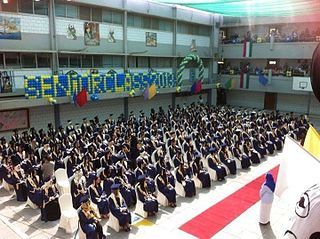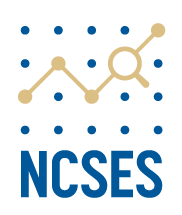Related Research Articles

Humanities are academic disciplines that study aspects of human society and culture, including certain fundamental questions asked by humans. During the Renaissance, the term "humanities" referred to the study of classical literature and language, as opposed to the study of religion, or "divinity". The study of the humanities was a key part of the secular curriculum in universities at the time. Today, the humanities are more frequently defined as any fields of study outside of natural sciences, social sciences, formal sciences, and applied sciences. They use methods that are primarily critical, speculative, or interpretative and have a significant historical element—as distinguished from the mainly empirical approaches of science.

The American Academy of Arts and Sciences is one of the oldest learned societies in the United States. It was founded in 1780 during the American Revolution by John Adams, John Hancock, James Bowdoin, Andrew Oliver, and other Founding Fathers of the United States. It is headquartered in Cambridge, Massachusetts.

The University of New England (UNE) is a private research university in Portland and Biddeford, Maine, United States. It traces it historical origins to 1831 when Westbrook Seminary opened on what is now the UNE Portland Campus.
College and university rankings order higher education institutions based on various criteria, with factors differing depending on the specific ranking system. These rankings can be conducted at the national or international level, assessing institutions within a single country, within a specific geographical region, or worldwide. Rankings are typically conducted by magazines, newspapers, websites, governments, or academics.
The Carnegie Classification of Institutions of Higher Education, or simply the Carnegie Classification, is a framework for classifying colleges and universities in the United States. It was created in 1970 by the Carnegie Foundation for the Advancement of Teaching. It is managed by the American Council on Education.

Edith Cowan University (ECU) is a public research university in Western Australia. It is named in honour of the first woman to be elected to an Australian parliament, Edith Cowan, and is the only Australian university named after a woman. It is the second-largest university in the state with over 30,000 students in 2023. Gaining university status in 1991, it was formed from an amalgamation of tertiary colleges with a history dating back to 1902 when the Claremont Teachers College was established, making it the modern descendant of the first tertiary institution in Western Australia.
The Marianna Brown Dietrich College of Humanities and Social Sciences is the liberal and professional studies college and the second-largest academic unit by enrollment at Carnegie Mellon University in Pittsburgh, Pennsylvania, USA. The college emphasizes study through rigorous analysis and technology of the behaviors, institutions, and beliefs that constitute the human experience, describing itself as “not an ordinary liberal arts school.” The college was named for Marianna Brown Dietrich, the mother of philanthropist William S. Dietrich II, after his donation of $265 million to the university in 2011 – the largest single donation in Carnegie Mellon history.

In the United States, higher education is an optional stage of formal learning following secondary education. It is also referred to as post-secondary education, third-stage, third-level, or tertiary education. It covers stages 5 to 8 on the International ISCED 2011 scale. It is delivered at 3,931 Title IV degree-granting institutions, known as colleges or universities. These may be public or private universities, research universities, liberal arts colleges, community colleges, or for-profit colleges. U.S. higher education is loosely regulated by the government and by several third-party organizations.

Science, technology, engineering, and mathematics (STEM) is an umbrella term used to group together the distinct but related technical disciplines of science, technology, engineering, and mathematics. The term is typically used in the context of education policy or curriculum choices in schools. It has implications for workforce development, national security concerns, and immigration policy, with regard to admitting foreign students and tech workers.
Graduate unemployment, or educated unemployment, is unemployment among people with an academic degree.

Personal income is an individual's total earnings from wages, investment interest, and other sources. The Bureau of Labor Statistics reported a median weekly personal income of $1,139 for full-time workers in the United States in Q1 2024. For the year 2022, the U.S. Census Bureau estimates that the median annual earnings for all workers was $47,960; and more specifically estimates that median annual earnings for those who worked full-time, year round, was $60,070.
The MIT School of Humanities, Arts, and Social Sciences (SHASS) is one of the five schools of the Massachusetts Institute of Technology, located in Cambridge, Massachusetts, US. The school includes 11 academic areas and works alongside six departments, labs, and programs. SHASS grants SB, SM, and PhD degrees. Major fields of study include anthropology, comparative media studies and writing, economics, history, linguistics, literature, music, philosophy, political science, science, technology, and society, and theater arts. Other programs include the Center for International Studies; Knight Science Journalism; Science, Technology, and Society; Security Studies; and HyperStudio.
The study of the humanities in the United States includes the study of humanities disciplines such as literature, history, language, performing and visual arts or philosophy.

The State of Kuwait, located at the head of the Persian Gulf, supports an educational policy that seeks to provide an opportunity to all children, irrespective of their social class, including children with special needs. Kuwait was ranked 63rd on the Human Development Index report for 2011 by the United Nations Development Programme, placing Kuwait above the regional average.
The QS World University Rankings is a portfolio of comparative college and university rankings compiled by Quacquarelli Symonds, a higher education analytics firm. Its first and earliest edition was published in collaboration with Times Higher Education (THE) magazine as Times Higher Education–QS World University Rankings, inaugurated in 2004 to provide an independent source of comparative data about university performance. In 2009, the two organizations parted ways to produce independent university rankings, the QS World University Rankings and THE World University Rankings.

There is concern that the possible higher education bubble in the United States could have negative repercussions in the broader economy. Although college tuition payments are rising, the supply of college graduates in many fields of study is exceeding the demand for their skills, which aggravates graduate unemployment and underemployment while increasing the burden of student loan defaults on financial institutions and taxpayers. Moreover, the higher education bubble might be even more serious than load of student debts. Without safeguards in place for funding and loans, the government risks creating a moral hazard in which schools charge students expensive tuition fees without offering them marketable skills in return. The claim has generally been used to justify cuts to public higher education spending, tax cuts, or a shift of government spending towards law enforcement and national security. There is a further concern that having an excess supply of college graduates exacerbates political instability, historically linked to having a bulge in the number of young degree holders.
College and university rankings in the United States order the best U.S. colleges and universities based on factors that vary depending on the ranking. Rankings are typically conducted by magazines, newspapers, websites, governments, or academics. In addition to ranking entire institutions, specific programs, departments, and schools can be ranked. Some rankings consider measures of wealth, excellence in research, selective admissions, and alumni success. There is also much debate about rankings' interpretation, accuracy, and usefulness.
The political views of American academics began to receive attention in the 1930s, and investigation into faculty political views expanded rapidly after the rise of McCarthyism. Demographic surveys of faculty that began in the 1950s and continue to the present have found higher percentages of liberals than of conservatives, particularly among those who work in the humanities and social sciences. Researchers and pundits disagree about survey methodology and about the interpretations of the findings.
Higher education in the United States is an optional stage of formal learning following secondary education. Higher education, also referred to as post-secondary education, third-stage, third-level, or tertiary education occurs most commonly at one of the 3,899 Title IV degree-granting institutions in the country. These may be public universities, private universities, liberal arts colleges, community colleges, or for-profit colleges. Learning environments vary greatly depending on not only the type of institution, but also the different goals implemented by the relevant county and state.

The National Center for Science and Engineering Statistics (NCSES) is one of the thirteen principal statistical agencies of the United States and is tasked with providing objective data on the status of the science and engineering enterprise in the U.S. and other countries. NCSES sponsors or co-sponsors data collection on 15 surveys and produces two key publications: Science and Engineering Indicators, and Women, Minorities, and Persons with Disabilities in Science and Engineering. Though policy-neutral, the data and reports produced by NCSES are used by policymakers when making policy decisions regarding STEM education and research funding in the U.S.
References
- ↑ Chronicle of Higher Education, "First National Picture of Trends in the Humanities Is Unveiled".
- ↑ Indicators in the News.
- ↑ Heller, Nathan (February 27, 2023). "The End of the English Major". The New Yorker.
- ↑ Tietz, Kendall (March 16, 2023). "College students and universities ditching humanities majors in order to prepare for 'in-demand careers'". Fox News.
- ↑ Jaschik, Scott (November 7, 2023). "Humanities Graduates Are Happy With Their Lives". Inside Higher Ed.
- ↑ Basken, Carl (November 8, 2021). "US humanities graduates feel unprepared for life beyond college". Times Higher Education.
- ↑ Wulf, Karin (December 17, 2020). "The Humanities [Are Everywhere] in American Life". The Scholarly Kitchen.
- ↑ Bishara, Hakim (November 13, 2020). "How Do Americans Feel About the Arts? A New Survey Offers Insights". Hyperallergic.